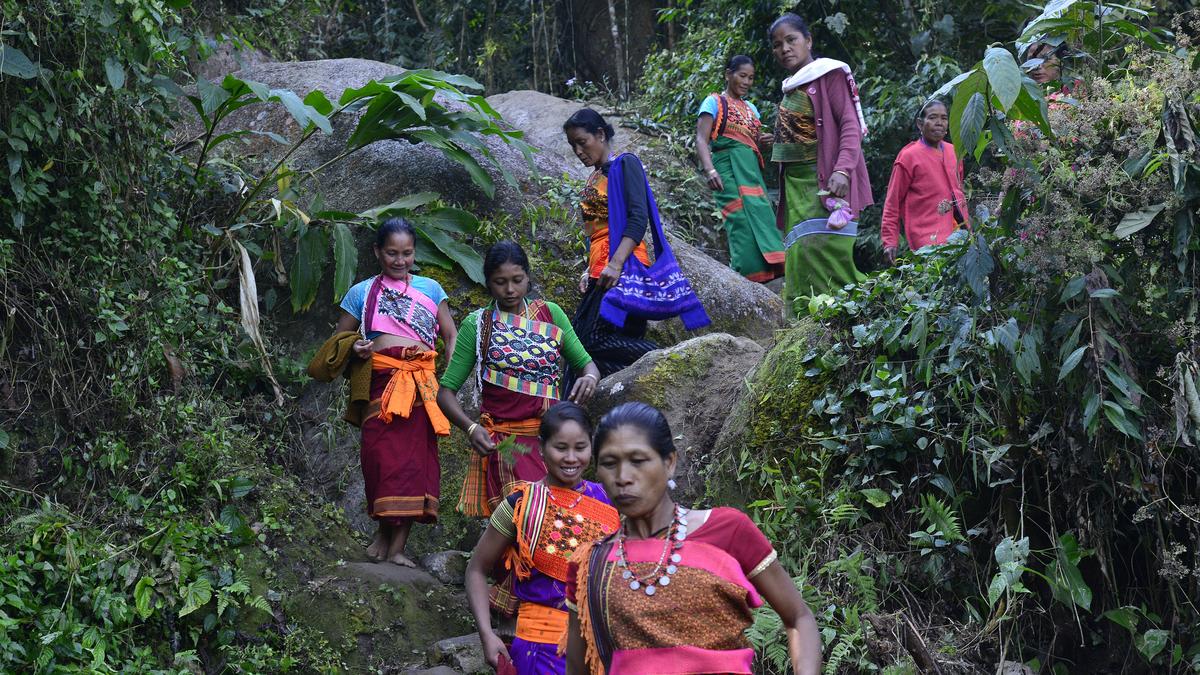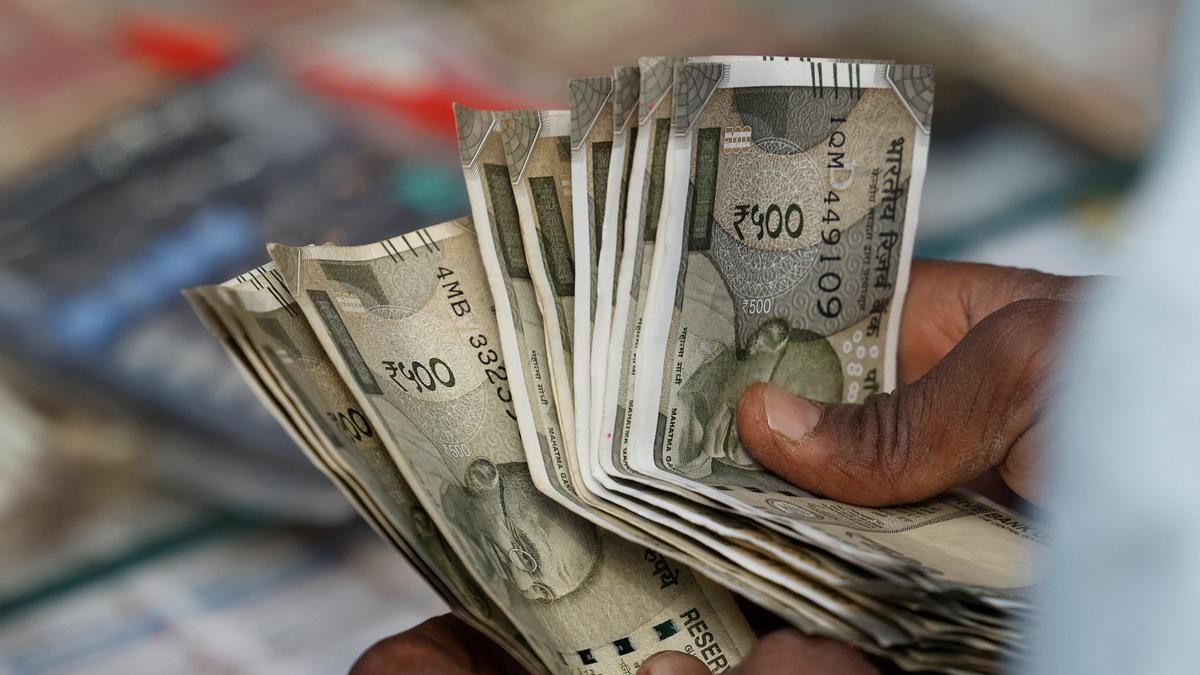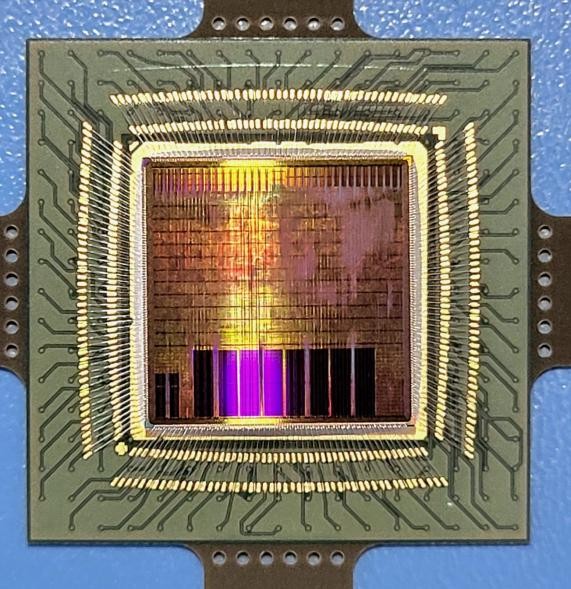UDAN 5.5 – Advancing Last-Mile Air Connectivity
- 15 Feb 2025
In News:
- The Government of India has launched UDAN 5.5, the latest phase of its flagship regional air connectivity scheme UDAN (UdeDesh ka AamNaagrik).
- It aims to enhance last-mile air connectivity in remote, hilly, and island regions using smaller aircraft, helicopters, and seaplanes.
About UDAN Scheme
- Launched: 2016, under the National Civil Aviation Policy (NCAP).
- Nodal Ministry: Ministry of Civil Aviation.
- Purpose: To make air travel affordable, accessible, and widespread, especially in Tier-2 and Tier-3 towns.
Objectives
- Provide affordable air travel to the common citizen.
- Improve air connectivity in unserved and underserved regions.
- Promote regional development and economic integration.
Key Features
- Fare Cap: ?2,500 per hour of flight for 50% of seats (about 500 km distance).
- Viability Gap Funding (VGF):
- Provided to airlines to cover shortfalls between operational cost and revenue.
- Financed via Regional Connectivity Fund (RCF).
- Government Contribution to VGF:
- State Governments: 20%
- Union Territories & North-Eastern Region (NER) States: 10%
- Support Measures: Concessions from Central/State Governments and airport operators.
Special Variants Under UDAN
- Lifeline UDAN: For transporting medical cargo during COVID-19.
- Krishi UDAN: For agricultural produce value realization, especially from NER and tribal districts.
- International UDAN: To connect NER cities like Guwahati and Imphal with international destinations.
UDAN 5.5 – Key Highlights
- Focuses on last-mile connectivity in challenging terrains where traditional aviation is impractical.
- Aircraft Types Allowed:
- Category 1A: < 9 seats
- Category 1: < 20 seats
- Operational Modes:
- Seaplanes: Use of 80 water bodies including waterdromes, ponds, dams.
- Helicopters: Routes mapped from 400 helipads nationwide.
- Small Aircraft: Routes specifically for aircraft under 20-passenger capacity.
- Encourages air taxi and niche aviation operators.
Achievements of UDAN (as of 2024)
- Passenger Impact: Enabled travel for over 1.5 crore passengers.
- Flight Operations: Over 2.8 lakh UDAN flights completed.
- Route Expansion: 619 routes operationalized, including helicopter routes.
- Airport Growth: Number of operational airports doubled from 74 in 2014 to over 157 in 2024.
- Destinations Connected:
- 68 unserved/underserved destinations added: includes 58 airports, 8 heliports, 2 water aerodromes.
Future Scope
- Current Challenges:
- India currently has no active seaplane services.
- Fewer than 20 small aircraft (Category A1) in operation.
- Projected Developments (next 5 years):
- Establishment of 50+ seaplane routes.
- Creation of 20–25 water aerodromes.
- Induction of around 30 new aircraft for regional connectivity.
Einstein Ring Discovered by ESA’s Euclid Telescope
- 15 Feb 2025
In News:
- The European Space Agency’s (ESA) Euclid space telescope has recently discovered a rare Einstein ring around the galaxy NGC 6505, located nearly 590 million light-years from Earth.
- This ring was formed by the light of a distant unnamed galaxy situated 4.42 billion light-years away, distorted and amplified due to gravitational lensing by NGC 6505.
What is an Einstein Ring?
- It is a circular ring of light that appears around a massive celestial object such as a galaxy, dark matter concentration, or cluster of galaxies.
- Caused due to strong gravitational lensing, it occurs when a massive foreground object (gravitational lens) bends and amplifies the light from a background object, resulting in a circular or arc-like appearance.
- The phenomenon only results in a full ring when the observer, lensing object, and background galaxy are almost perfectly aligned.
Theoretical Basis
- Named after Albert Einstein, who in his General Theory of Relativity predicted that massive objects warp space-time, thereby bending the path of light.
- The phenomenon of gravitational lensing, and by extension Einstein rings, was first theoretically anticipated by Einstein and empirically confirmed much later.
Scientific Importance
- Extremely rare phenomena: Occur in less than 1% of galaxies.
- Serve as natural cosmic magnifying lenses that allow scientists to study:
- Dark Matter: Helps trace the invisible distribution of dark matter through gravitational effects.
- Dark Energy: Supports understanding of dark energy’s role in accelerating the universe’s expansion.
- Distant Galaxies: Reveals otherwise invisible galaxies by amplifying their light.
- Universe Expansion: Provides data on how space between galaxies stretches over cosmic time.
Gravitational Lensing: Explained
- Gravitational lensing occurs when a massive body (galaxy, cluster, black hole) creates a gravitational field that bends and magnifies light from objects behind it.
- This leads to multiple outcomes — arcs, double images, or full rings (Einstein rings).
- The lensing object in the recent case is NGC 6505, a galaxy first observed in the 19th century.
Observation and Imaging
- Einstein rings are not visible to the naked eye and require powerful space telescopes like Euclid for detection.
- Euclid captured images showing a bright central galaxy (NGC 6505) with a distinctive, cloudy ring formed by the bent light from the background galaxy.
About the Euclid Space Telescope
- Launched in 2023 by ESA using a SpaceX Falcon 9 rocket from Cape Canaveral, Florida.
- Operates from Lagrangian Point 2 (L2), located 1.5 million km from Earth.
- Designed for a six-year mission to study the dark universe.
- Key Objectives:
- Create the largest 3D map of the cosmos.
- Observe billions of galaxies across 10 billion light-years.
- Understand the distribution of dark matter and the influence of dark energy in the early universe.
- Study light emitted from galaxies up to 10 billion years ago to trace cosmic evolution.
Gender Budgeting

- 15 Feb 2025
In News:
The Gender Budget allocation for FY 2025-26 has increased to ?4.49 lakh crore, accounting for 8.86% of the total Union Budget, up from 6.8% in FY 2024-25. This represents a 37.25% increase compared to the ?3.27 lakh crore allocated in the previous year.
Key Highlights:
- Expansion Across Ministries:
- A total of 49 Ministries/Departments and 5 Union Territories (UTs) have reported allocations in the Gender Budget Statement (GBS) for 2025-26, marking the highest participation since the inception of the Gender Budget.
- Twelve new Ministries have been included in the GBS this year, signaling a broader inclusion of gender considerations in sectors such as animal husbandry, biotechnology, water resources, food processing, and railways.
- Gender Budget Allocation Breakdown:
- Part A (100% Women-specific schemes): ?1,05,535.40 crore (23.5% of total GBS).
- Part B (30-99% allocation for women): ?3,26,672 crore (72.75% of total GBS).
- Part C (Below 30% allocation for women): ?16,821.28 crore (3.75% of total GBS).
- Top Ministries reporting high percentages in gender-focused allocations include the Ministry of Women & Child Development (81.79%), Department of Rural Development (65.76%), and Department of Health & Family Welfare (41.10%).
- Focus on Women’s Economic Participation:
- The Union Budget aims to boost women’s participation in economic activities, targeting 70% by 2047.
- Women’s Labour Force Participation Rate (LFPR) rose to 42% in 2023-24 from 33% in 2021-22.
- Efforts to close the gender gap involve increased allocations to programs like Skill India, Deendayal Antyodaya Yojana-National Rural Livelihoods Mission (DAY-NRLM), and PM Vishwakarma, with 52% of the ?1.24 lakh crore allocated for these programs earmarked for women and girls.
- Support for Women Entrepreneurs:
- Women own 20.5% of micro, small, and medium enterprises (MSMEs) in India, employing approximately 27 million people.
- The Budget focuses on empowering women entrepreneurs by advocating for collateral-free loans, alternative credit scoring models, and financial literacy programs.
- Establishing 30 million additional women-owned businesses could generate 150-170 million jobs by 2030, contributing significantly to India's employment needs.
- Gig Economy and Informal Sector:
- The Budget introduces measures to formalize gig workers, 90% of whom are women. By issuing identity cards and registering gig workers on the e-Shram portal, the Budget aims to provide them with access to social security and financial inclusion benefits.
- This addresses the challenges faced by women in the informal sector, including low wages, job insecurity, and lack of maternity benefits.
- Gender Inclusivity in Technology:
- A dedicated ?600 crore allocation under the India AI Mission aims to promote gender inclusivity in the technology sector. This includes the establishment of a Centre of Excellence on Artificial Intelligence (AI) for education and skill development, ensuring women’s participation in high-growth technological fields.
- Gender Budgeting Components:
- Part A: Gender-specific expenditure, directly benefiting women (e.g., BetiBachaoBetiPadhao).
- Part B: Pro-women general expenditure, benefiting both men and women but focusing on women’s advancement (e.g., MGNREGA).
- Part C: Gender-neutral budgets that may require gender-sensitive planning (e.g., Har GharNal project, which reduces women’s time spent fetching water).
- Policy Vision and Challenges:
- The Union Budget for 2025-26 is part of the government’s vision for a "Viksit Bharat" with zero poverty, universal education, 100% skilled labor, and 70% female participation in the workforce by 2047.
- While the Budget lays a strong foundation, addressing persistent challenges like gender pay gaps, occupational segregation, and cultural barriers will require sustained policy interventions, gender-sensitive workplace reforms, and effective implementation of gender-disaggregated data for monitoring outcomes.
Corruption Perceptions Index (CPI) 2024

- 15 Feb 2025
In News:
India ranked 96th out of 180 countries in the Corruption Perceptions Index (CPI) for 2024, with a score of 38, a decline from 39 in 2023 and 40 in 2022. This indicates a worsening perception of corruption within India’s public sector.
Global Context:
- The CPI, compiled annually by Transparency International, is a widely recognized global ranking system that evaluates the perceived levels of corruption in public sectors.
- It uses a scale of 0 to 100, where 0 indicates highly corrupt and 100 signifies very clean.
- The CPI is based on expert assessments and surveys, drawing from at least three data sources out of 13 recognized corruption assessments from organizations like the World Bank and the World Economic Forum.
- Top Ranking Countries: Denmark topped the 2024 CPI, followed by Finland and Singapore, indicating strong governance systems with minimal corruption. These countries are recognized for their effective public sector governance, transparency, and low corruption levels.
- Regional Comparison: Among India’s neighbors, Pakistan ranked 135th, Sri Lanka at 121st, Bangladesh at 149th, and China ranked 76th, performing relatively better than India. The Asia-Pacific region, in general, saw a decline in its average CPI score, dropping by one point to 44.
- Global Trends: The CPI 2024 reveals troubling global trends, with corruption being a persistent issue worldwide. While 32 countries have significantly improved their corruption scores since 2012, 148 countries have either stagnated or worsened in the same period.
- The global average score remains at 43, with more than two-thirds of countries scoring below 50, signaling a widespread corruption problem.
- Corruption’s Impact on Climate Action: One of the significant findings in 2024 is the link between corruption and climate action. Corruption undermines efforts to combat climate change by misappropriating funds meant for emission reduction and climate adaptation projects.
- The report warns that such corruption obstructs effective policies and hinders climate change mitigation, leading to environmental degradation. Furthermore, it highlights that corruption in high-CPI countries often serves the interests of fossil fuel companies, complicating global climate efforts.
- Corruption and Human Rights: The report underscores that corruption not only impedes economic development but also contributes to the erosion of democracy, human rights violations, and instability. Corruption, particularly in the form of misallocation of resources, exacerbates the vulnerability of populations already affected by climate change, poverty, and human rights abuses.
- Financial Hubs and Illicit Funds: Many countries with high CPI scores, despite their lower domestic corruption levels, serve as financial hubs that attract illicit funds stemming from corruption and environmental damage. This "dirty money" exacerbates corruption on a global scale and has far-reaching consequences that extend beyond national borders.
- The Call for Action: Transparency International’s report stresses the need for global cooperation in tackling corruption. It warns that corruption is a major contributor to the rise of authoritarianism and calls for urgent, concrete action to address global corruption. The report emphasizes that combating corruption is crucial for achieving a peaceful, sustainable, and democratic world.
India’s Indigenous Shakti Semiconductor Chip

- 15 Feb 2025
In News:
India has achieved a significant milestone in semiconductor technology with the development of the indigenous Shakti semiconductor chip. Developed by the Indian Institute of Technology (IIT) Madras in collaboration with the Indian Space Research Organisation (ISRO) and supported by the Ministry of Electronics and Information Technology (MeitY), the Shakti chip is a crucial component of India’s push for technological self-reliance under the Digital India RISC-V (DIRV) initiative.
Overview of Shakti Semiconductor Chip
- The Shakti chip is an indigenous microprocessor based on the RISC-V open-source Instruction Set Architecture (ISA).
- Its primary objective is to meet the high-performance computing, security, and reliability needs of India’s defense, aerospace, and space industries.
- It was specifically designed to support applications in satellite missions, avionics, embedded systems, and command-and-control operations.
- The chip is the third in the Shakti series, following the earlier RIMO (2018) and MOUSHIK (2020) chips, which served as technology demonstrators.
Key Features:
- Indigenous Development: Fully developed, fabricated, and tested in India, ensuring complete control over the design and manufacturing process.
- RISC-V Architecture: The Shakti chip utilizes the RISC-V open-source architecture, offering flexibility for customization and adaptation to various hardware and application needs.
- Fault Tolerant and Reliable: Designed to endure the harsh conditions of space and defense applications, making it highly reliable for mission-critical functions.
- High-Performance Computing: Supports complex functions like AI-based operations, real-time control systems, and sensor integration, essential for space missions and advanced defense technologies.
- Advanced Security: Aimed at providing robust security measures for critical sectors, including defense and aerospace, ensuring protection against cyber threats.
- Expandable and Scalable: The chip supports multiple boot modes and hybrid memory extensions, allowing for future upgrades and expansions, especially for space exploration.
Applications of the Shakti Chip
- Space Missions: The Shakti chip plays a vital role in powering ISRO's command-and-control systems, satellite avionics, and embedded systems used in various space missions.
- Defense & Aerospace: It enhances India’s strategic autonomy by reducing reliance on foreign semiconductor technology for military-grade electronics.
- IoT & AI Applications: The chip’s high-performance computing capabilities are ideal for smart systems, the Internet of Things (IoT), and AI applications.
- Research and Development: The chip contributes significantly to India’s semiconductor ecosystem, providing a foundation for further R&D in indigenous chip fabrication.
The Digital India RISC-V (DIRV) Initiative
- Launched in April 2022 by MeitY, the DIRV initiative aims to strengthen India’s semiconductor ecosystem by promoting the development of indigenous RISC-V-based microprocessors.
- The initiative emphasizes reducing dependency on foreign semiconductor solutions and fostering self-reliance in the digital sector.
- DIRV also focuses on high-performance computing for emerging technologies such as 5G, AI, and cloud computing. Through collaborations with IITs, ISRO, C-DAC, and private industry partners, the program aims to create a robust ecosystem for scalable microprocessor solutions.
IRIS: A Key Development from Shakti
- One of the most notable outputs of the Shakti chip initiative is the IRIS (Indigenous RISC-V Controller for Space Applications).
- Developed for ISRO’s space missions, the IRIS chip is a high-performance, fault-tolerant, 64-bit processor based on the Shakti microprocessor.
- It has been designed to meet the specific needs of space missions, such as satellite command-and-control systems, by integrating custom modules like watchdog timers and advanced serial buses.
- The IRIS chip also features multiple boot modes and hybrid memory extensions for future scalability and expansion in line with upcoming space missions.
